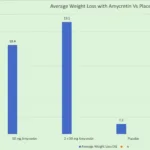Key points:
- A recent study found that JAK inhibitors, used to treat pediatric patients, can cause serious side effects.
- These include an increased risk of infections, liver issues, GIT problems, hematological abnormalities, and CVDs.
- Some children taking JAK inhibitors have had very serious problems, even death. This shows that doctors need to watch them closely and carefully consider the risks when giving these medicines to kids.
- Doctors need to regularly monitor children taking JAK inhibitors and watch for any signs of problems. They should also do proper blood tests and check liver function to make sure everything is okay.
- It is important for the public to know about the possible health risks of these medications so that parents and caregivers can recognize the warning signs and symptoms of serious and life-threatening conditions.
- Further research is needed to completely understand the risks and safety of using JAK inhibitors in pediatric patients.
JAK inhibitors are a type of medication that works by targeting specific proteins in the immune system.
They were first used to treat adults with rheumatoid arthritis and later in skin conditions such as atopic dermatitis and alopecia areata.
These drugs have also been approved for the treatment of ankylosing spondylitis, ulcerative colitis, and graft-versus-host disease.
A new study, published on 5th Sept, looked at the possible side effects of JAK inhibitors in children.
This study examines the safety information about these medicines, giving doctors and families a better understanding of how they work and what to expect.
Methodology and analysis:
The researcher collected data from FDA safety records. The five medications that were studied were baricitinid, abrocitinib, upadacitinib, ruxolitinib, and tofacitinib, which are all approved for use in children.
To learn about the side effects the authors gathered reports sent to the FDA over a 12-year period, from 2011 to 2023.
They divided the data into 2 groups: adults and children. Then, they counted how often each side effect was reported.
They used a standard system to categorize each side effect, making it easier to understand and compare the data.
JAK Inhibitors in Children: Key Findings of the study
The study discovered that children and adults had different side effects. Children were more likely to experience problems with their blood counts and infections like pneumonia.
They also had a high rate of having stomach and gut issues such as diarrhoea and nausea, as well as breathing problems like coughing and wheezing. Overall, these issues occur more often in children than in others.
In adults, the most common side effects were infections, stomach problems, and muscle and joint issues.
Surprisingly, children taking these medications had more skin issues, like acne, than adults. On the other hand, they had fewer serious side effects, such as severe infection and heart problems, compared to adults.
These results are important for doctors to keep in mind when giving such drugs to kids. This way, they can properly manage, and monitor the side effects, keeping their young patients safe.
Tofacitinib Induced Sjogren Syndrome in a Woman Treated for PMR
Safety Considerations for Pediatric Patients
Based on the study, healthcare providers should carefully consider the pros and cons of using JAK inhibitors in children.
They should closely watch patients, for any signs of harmful side effects, especially infection and blood-related problems.
Regular blood tests and liver checks may be needed to catch any potential issues early.
It is also important to tell families about the potential risks of JAK inhibitors. Parents and caregivers should know what signs and symptoms to look out for and be encouraged to speak up if they have any concerns, so their doctors can act quickly.
Previous Research and Safety Profile of JAK Inhibitors
Prior studies have already shown that JAK inhibitors can have harmful side effects in adults, including:
Increased risk of infections:
JAK inhibitors weaken the immune system, making it harder for the body to fight off inflammation.
This increases the risk of getting sick with various infections like tuberculosis and fungal ones. This happens because JAK inhibitors affect the protein that helps the immune system work, patients taking these medications may be more likely to develop a hard-to-treat infection.
Cardiovascular risks:
Research suggests that JAK inhibitors may increase the risk of heart problems, including heart failure and venous thromboembolism [ref].
This could be due to the JAK inhibitor’s effect on blood pressure and how blood clots form. It is essential for patients taking JAK inhibitors to be closely checked for signs of heart issues such as difficulty breathing, chest pain, or swelling legs.
Hematological side effects:
JAK inhibitors can cause low blood cell counts, including anemia [ref], which is a low red blood cell count, that can cause fatigue and weakness. Neutropenia, or low white blood cell count, increases the risk of infection.
Additionally, thrombocytopenia, or a low platelet count, raises the risk of bleeding. To lower these risks, regular blood tests are needed to monitor for these side effects and adjust the treatment plan to keep the patients safe.
Liver abnormalities:
Some patients taking JAK inhibitors have experienced liver issues, including liver enzymes and liver inflammation.
This can be severe, so regular liver checks are vital. Those with pre-existing problems may face a higher risk of liver toxicity.
Cancer risk:
The research is still ongoing, it suggests that patients who take JAK inhibitors for a long time may increase the risk of certain cancers, especially skin cancer [ref].
This might be due to how JAK inhibitors affect the immune system and cell growth over time. To keep themselves safe, patients should protect their skin from the sun, and tell their doctor if they see any unusual skin changes.
While JAK inhibitors have risks, they can be an effective treatment option for adults with autoimmune diseases.
By discussing benefits and risks with their doctors, patients can decide whether this medication is right for them. Regular monitoring can help identify and manage any side effects that may occur.
Tofacitinib for Polymyositis Refractory to Prednisone and Methotrexate
Conclusion
Research on the side effects of JAK inhibitors in pediatric patients shows how important it is to carefully watch for problems and assess the risk when giving these medications to kids.
JAK inhibitors are very effective in treating autoimmune diseases, but it is essential to consider both the potential benefits and risks.
By knowing what side effects to look for and working closely with healthcare providers, families can play a vital role in ensuring the safe and effective use of JAK inhibitors in pediatric patients.



